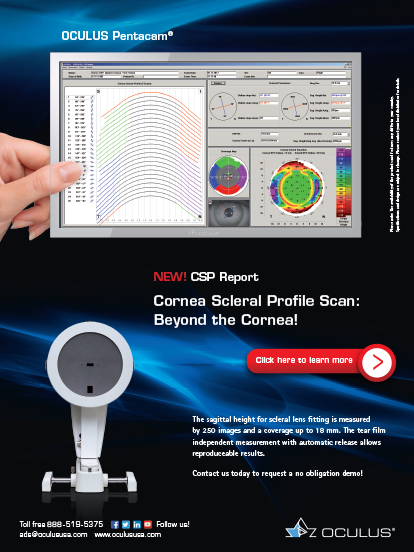The ophthalmologists in our practice treat me and our other optometrist with great respect. They have encouraged us to run dry eye and specialty contact lens clinics and to work closely together with them on tough surgical cases. I’ve been lucky, as I know that not all relationships between ODs and MDs flow so smoothly.
Three moments in particular stand out to me as examples of when an MD let me know that he appreciated my hard work and competence. These vignettes may help other ODs understand that our work is valued more than we may realize and illustrate to MDs how a little gesture can go a long way to fostering a mutually beneficial relationship.
FIRST ENCOUNTER: THE AIR FORCE
Early in my career, I was a US Air Force optometrist stationed in Great Falls, Montana. I referred one of my favorite patients, a 90-year-old veteran, to David Boes, MD, for a glaucoma consult and selective laser trabeculoplasty. The patient’s disease was progressing despite medical management. I had previously referred patients to Dr. Boes, and, although we had not met in person, I trusted him because of his reputation.
This particular patient had a tough glaucoma case, and I was concerned about what Dr. Boes would think. Perhaps he would tell the patient that I had waited too long to refer him or that my medical judgement was flawed. I was pleasantly surprised to find that my fears were unfounded: Dr. Boes expressed to the patient full confidence in my care, agreed with my treatment plan, and sent the patient back to me. Dr. Boes trusted my abilities and training as an optometrist. As a young OD, this gave me great faith that comanaging patients could be the future of eye care.
SECOND ENCOUNTER: ATTENDING A MEETING
Mark Kontos, MD, is the senior partner at Empire Eye, where I now practice. I had been employed by Empire Eye for less than a year when I attended the ASCRS Annual Meeting with Dr. Kontos. While we were there, Dr. Kontos invited me to attend two meetings of a small group of very well-known and respected ophthalmologists. I was the only optometrist.
At these meetings, we discussed new sight-saving treatments such as CXL and leadership roles in eye care. Dr. Kontos and his ophthalmic colleagues treated me with the utmost respect and listened to my thoughts and opinions.
Here I was, a relatively young OD, sitting at a table with some of the top lecturers in the nation and Dr. Kontos, who had to leave early, asked me to represent him for the remainder of the meeting. Sometimes ODs feel that they need to “prove themselves” to MDs. As I talked with these MDs, I never once felt like I was looked down on or unqualified. I felt like a colleague, and those impressions will always stay with me. I shared my thoughts about successes and areas for improvement and it opened my eyes to the ease in which MDs and ODs can work synergistically for the common good of all.
THIRD ENCOUNTER: ACANTHAMOEBA KERATITIS
I had an experience with Christopher Sturbaum, MD, the managing partner at Empire Eye, that I will always remember. A patient was referred to Empire Eye with a contact lens–induced corneal ulcer. After I saw the patient, I told Dr. Sturbaum that I thought this was a case of Acanthamoeba keratitis due to the recurrence of the ulcer, the filthiness of the contact lens case, and the corneal ring-like stromal infiltrate. Contrary to textbook descriptions, the pain was mild to moderate rather than severe, but my gut told me it was Acanthamoeba.
Dr. Sturbaum smiled in disbelief because, even as a cornea specialist, it had been a few years since he had seen a case of Acanthamoeba keratitis. He suggested an alternative diagnosis and we walked in together to see the patient. After Dr. Sturbaum examined the patient, he turned to me and said, “You know, I think you’re right!” His doubt of my diagnosis didn’t bother me, but his acknowledgement of my skills in front of the patient was such positive reinforcement. Sure enough, cultures confirmed the diagnosis of Acanthamoeba keratitis, and Dr. Sturbaum still happily tells me of how confident he is in my abilities to manage tough cornea cases with him.
A TWO-WAY STREET
Optometrists feel empowered when their partner ophthalmologists comment on their clinical skills or demonstrate how their practice is improved by the presence of an OD. But ODs must remember that collaboration is a two-way street: Ophthalmologists also like to hear that their own skill sets are valued by optometrists.
As in the above examples, a small comment or gesture—or even inviting an ophthalmologist to attend an optometry meeting or vice versa—can go a long way in strengthening collaborative relationships.






